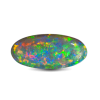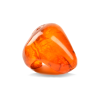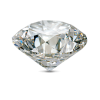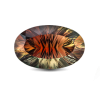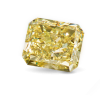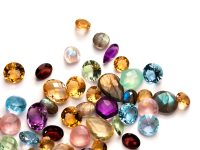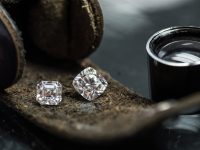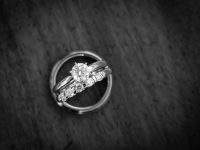Sapphire
The name “sapphire” can also apply to any corundum that’s not ruby red, another corundum variety.
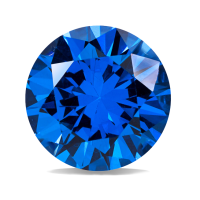
Sapphire Description
Blue sapphire belongs to the mineral species corundum. It can be a pure blue but ranges from greenish blue to violetish blue. The name “sapphire” can also apply to any corundum that’s not red and doesn’t qualify as ruby, another corundum variety.
Besides blue sapphire and ruby, the corundum family also includes so-called “fancy sapphires.” They come in violet, green, yellow, orange, pink, purple, and intermediate hues. There are also “parti-colored” sapphires that show combinations of different colors. Some stones exhibit the phenomenon known as color change, most often going from blue in daylight or fluorescent lighting to purple under incandescent light. Sapphires can even be gray, black, or brown.
Fancy sapphires are generally less available than blue ones, and some colors are scarce, especially in very small or very large sizes. Still, fancy sapphires create a rainbow of options for people who like the romance associated with this gem, but who also want something out of the ordinary.
Gemstone Details
- Mineral: Corundum
- Chemistry: Al2O3
- Color: Every color but red
- Refractive index: 1.762 to 1.770
- Birefringence: 0.008 to 0.010
- Specific gravity: 4.00
- Mohs Hardness: 9
Birthstones and Anniversaries
Sapphire is the birthstone for September and the gem of the 5th and 45th anniversaries.
Sapphire Gemstone as rough
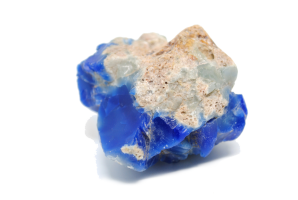
The mineral corundum is composed only of aluminum and oxygen, and it requires a growth environment that’s free of silicon. However, silicon is a very common element, making natural corundum relatively uncommon. In its purest state, corundum is actually colorless. Colorless sapphires were once popular diamond imitations, and they’ve staged a comeback as accent stones in recent years.
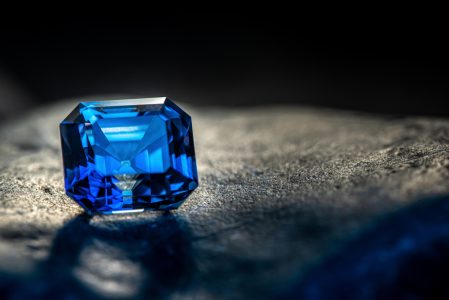
But colorless corundum is rare. Most corundum contains color-causing trace elements. When the trace elements are iron and titanium, the corundum is blue sapphire. Only a few hundredths of a percent of iron and titanium can cause the color, and the more iron the corundum contains, the darker the blue. Chromium can cause the red color of ruby or the pink of pink sapphire.
In the 1990s, discoveries in East Africa and Madagascar brought fancy sapphires widespread recognition.
The new sources supplemented production from traditional ones like Sri Lanka and Madagascar and increased the availability of yellows, oranges, pinks, and purples.
The colors attracted jewelry designers who wanted to move away from traditional hues of red, blue, and green. Now, contemporary designers arrange fancy sapphires in stunning rainbow suites.
Corundum can show a phenomenon called asterism, or the star effect. This phenomenon usually appears as a six-ray star pattern across a cabochon-cut stone’s curved surface. The star effect can be seen in ruby or any color of sapphire, and it arises from white light reflecting from numerous tiny, oriented needle-like inclusions.
Besides fancy sapphire and star corundum, there’s another interesting variety: color-change sapphire. These fascinating stones change color under different lighting. Their presence adds a special dimension to the already amazing corundum family of gems.
Both blue and fancy sapphires come from a variety of exotic sources including Madagascar, Tanzania, Sri Lanka, Myanmar, and Australia.
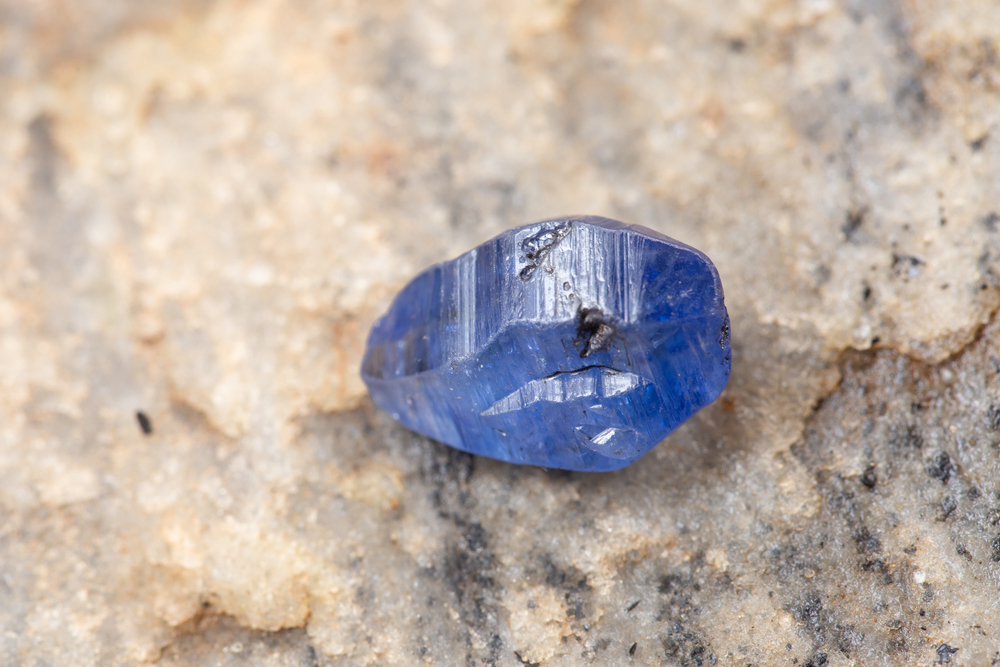
Sapphire History and Lore
For centuries, sapphire has been associated with royalty and romance. The association was reinforced in 1981, when Britain’s Prince Charles gave a blue sapphire engagement ring to Lady Diana Spencer. Until her death in 1997, Princess Di, as she was known, charmed and captivated the world. Her sapphire ring helped link modern events with history and fairy tales.
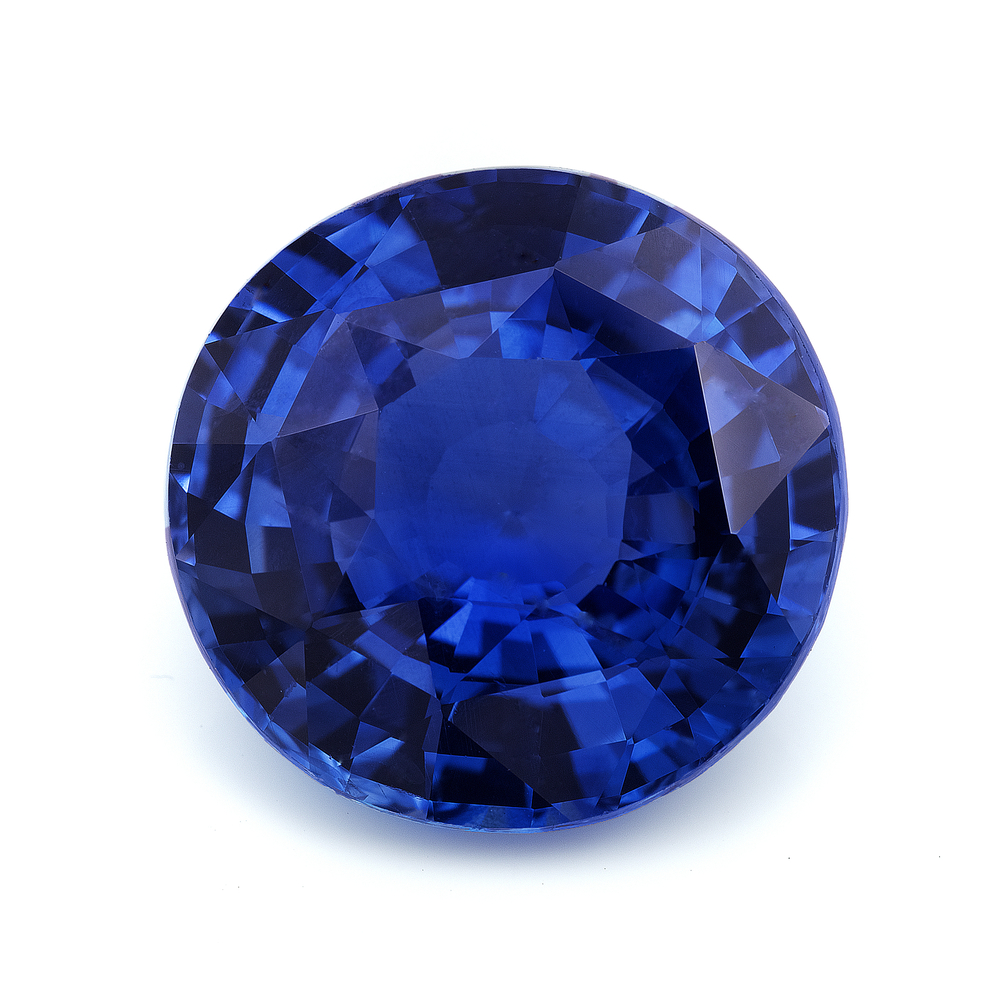
In ancient Greece and Rome, kings and queens were convinced that blue sapphires protected their owners from envy and harm. During the Middle Ages, the clergy wore blue sapphires to symbolize Heaven, and ordinary folks thought the gem attracted heavenly blessings. In other times and places, people instilled sapphires with the power to guard chastity, make peace between enemies, influence spirits, and reveal the secrets of oracles.
In folklore, history, art, and consumer awareness, sapphire has always been associated with the color blue. Its name comes from the Greek word sappheiros, which probably referred to lapis lazuli. Most jewelry customers think all sapphires are blue, and when gem and jewelry professionals use the word “sapphire” alone, they normally mean “blue sapphire.”
A special orangy pink sapphire color is called padparadscha, which means “lotus flower” in Sinhalese, the language spoken in Sri Lanka. Stones from Sri Lanka were initially the only ones labeled with this marketable name. There’s no telling how many padparadschas have been sifted from Sri Lankan river gravel throughout history. Sri Lankans have a special affection for the color that’s traditionally been linked with their country.
Facts about Sapphire Gemstone
VIVID AND SATURATED
Sapphire’s blue can be vivid and saturated, like it’s lit from within.
DURABLE
It’s so durable, synthetic sapphire is used for the windows of supermarket scanners and spacecraft.
DELICATE SILK
Sapphire often contains delicate intersecting needles of rutile that gemologists call silk.
Quality Factors
COLOUR
Sapphires come in a variety of colors. Preferred sapphires have strong to vivid color saturation, regardless of hue.
CLARITY
Blue sapphires typically have some inclusions, but they generally have better clarity than rubies.
CUT
Sapphire is often cut with a brilliant pattern on the crown and a step cut pattern on the pavilion.
CARAT WEIGHT
Blue sapphires range in size, and large blue sapphires are more readily available than large rubies.


